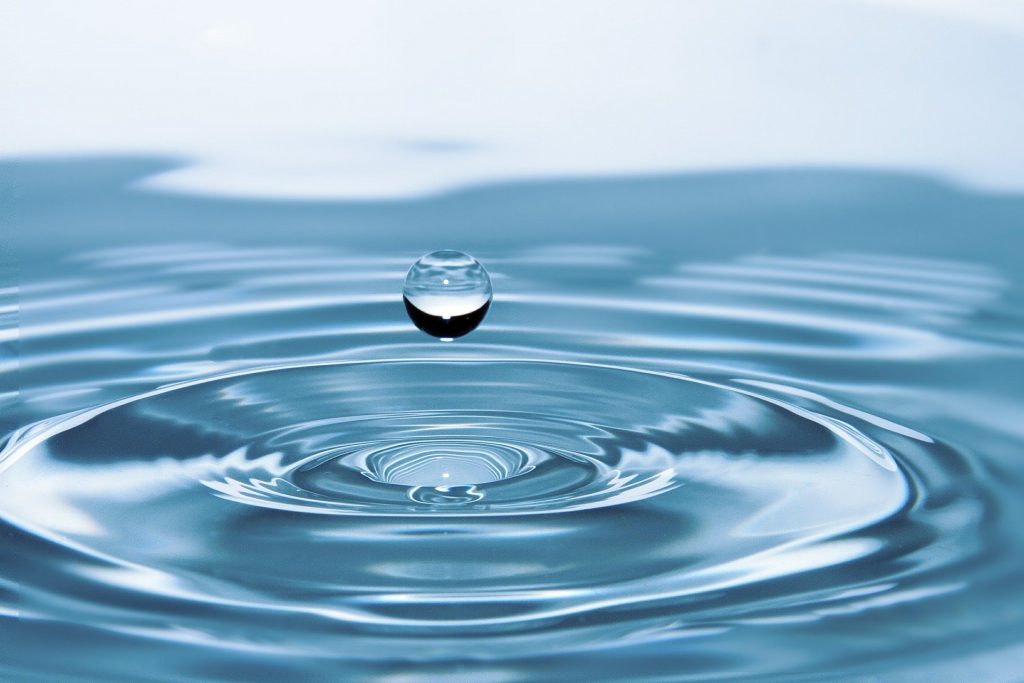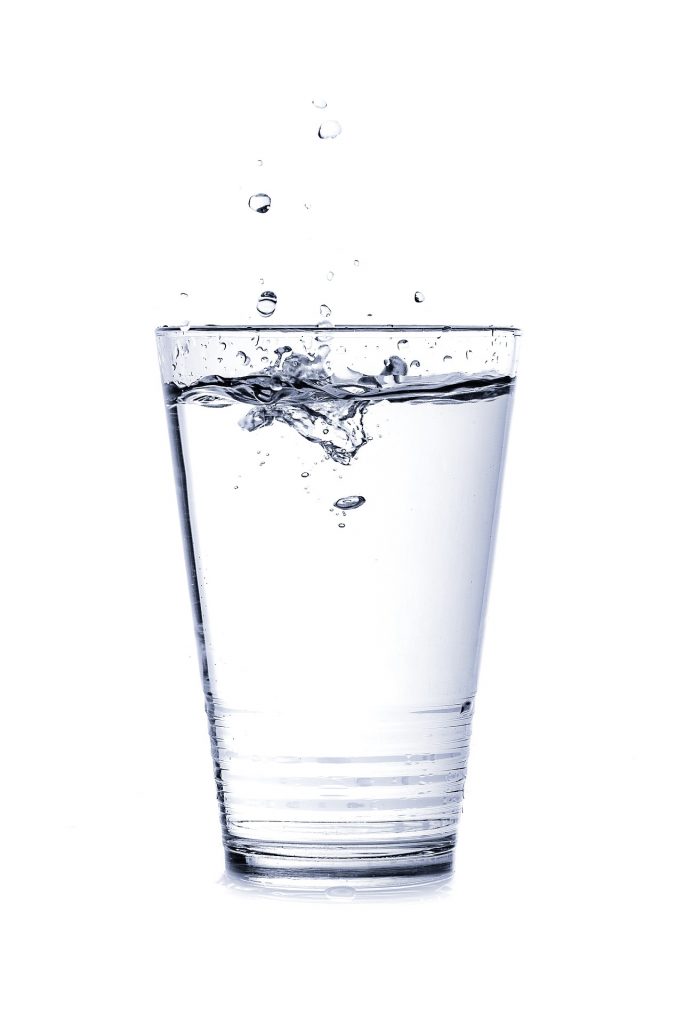Magnetized Water: Is There Any Evidence for Benefits?

Over the years practicing integrative and alternative medicine, I’ve heard numerous claims for water treatment technologies that supposedly can improve your health. The list is fairly long and filled with controversy:
- Alkaline water
- Oxygenated water
- Hydrogen water
- Imprinted water/water memory
- Vortexed water
- Nanobubbled water
- Deuterium-depleted water
- Easy water
- Magnetized water
And I’m sure I’ve missed others…
Many researchers are unwilling to explore the science of water, as careers have been destroyed over controversial results. Jacques Benveniste was a well respected researcher until he published a specific article in the journal Nature. He described using extremely high dilutions of antibodies that were still capable of causing white blood cell reactions. The dilution levels were so high that no antibodies were left in solution, and yet they still claimed to see effects (Davenas 1988). The ensuing firestorm around the possibility of “water memory” effectively ended Benveniste’s career.
In my twenties, I was reading a book on health and healing. The author recommended treating your drinking water with a magnet for 30 minutes. Curious, I placed a glass of water on top of a magnet and drank it after the allotted time. Afterwards, I was convinced that I felt a sense of increased energy and wellbeing. Hardly anything more than an anecdote, but to this day, I often keep my water jug on top of a strong magnet.
Since then, I’ve read claims that magnets can change water cluster size, decrease surface tension and change the bond angle of water. But is any of this true? Does a magnet change the properties of water? And if it does, are these changes beneficial for general health?
Water and Magnetic Fields
Generally, water is thought to be diamagnetic, meaning that it is weakly repelled by a magnet. If the magnetic field is really strong, it can actually form a small dimple on the top of the water (Bormashenko 2019). But that still doesn’t imply that the magnet is causing long-term changes to the properties of water.
Some common claims for magnetic-field-induced changes in water include:
- Surface tension decreases
- Salts and gasses dissolve more readily and stay in solution better
- pH is increased, decreasing acidity
- Evaporation rate increases
- Water clustering changes
Surface Tension
The claims around surface tension are difficult to confirm. Reports have varied with increasing surface tension in a magnetic field (Fujimura 2008) to decreased surface tension after magnetic field treatment (Cai 2009). A review article came to the conclusion that surface tension changes are small and measuring them accurately is difficult. Based on these issues, they question most of the published data (Amiri 2006).
Solubility
A study exploring the solubility of air in seawater reported significant changes in solubility with small increases in a weak magnetic field (Pazur 2008). A separate study looking at solubility of calcium oxalate, the main cause of kidney stones, showed increased solubility with increasing magnetic field exposure (Mousa 2007).
A separate study looking at weak magnetic fields also showed interesting effects. Water exposed to a magnetic field allowed for tiny xenon crystal formations, where unexposed water would not. The exposed water continued to show the effect for at least 2 days after being magnetized (Fesenko 2002).
Salt was also more easily cleared from soil using magnetized water (Mohamed 2013). Depending on the soil, they saw between 25% and 39% improved removal of salts from soil with magnetized water compared to regular water.
pH or Acidity
Using several different magnetic treatments, researchers found a small but consistent increase in pH of water exposed to magnetic fields. With treatment, the changes can last up to around 12 hours before returning to normal after exposure (Amor 2018). Another study using magnets and other types of fields showed increased pH that would also eventually return to baseline after magnetic field exposure (Yamashita 2003). It is worth noting that there are reports of finding no change in pH from magnetic field exposure as well (Quickenden 1971).
Evaporation Rate
If you leave a bowl of water out, eventually the water evaporates. The evaporation rate can be affected by a number of factors including magnetic field exposure. One study found evaporation increased by almost 39% from exposure to a magnetic field (Wang 2018). Another group confirmed faster evaporation of water in a magnetic field (Guo 2012).
Increased evaporation rates on exposure to a magnetic field is probably one of the better established effects. A recent review of magnetized water effects highlighted additional researchers who also showed increased evaporation rates with magnetic fields (Chibowski 2018).
Water Clustering
Water forms clusters due to hydrogen bonding between water molecules. Magnetic field exposure appears to change the size of this clustering. Experiments using exposure to the north pole of a magnet showed weaker intra cluster hydrogen bonds and stronger inter hydrogen bonding which favored smaller water clusters (Toledo 2008). Circulating water through a magnetic field appeared to increase cluster size in a separate study (Yang 2009). A third study looked at hydrogen bond strength as a function of water viscosity. They found magnetic field exposure from an unspecified magnetic pole decreased viscosity, likely from decreased hydrogen bond strength (Wang 2013).
Potential Clinical Effects
Bone Mineral Density

A simple study giving rats magnetized water as drinking water for 45 days showed a significant increase in bone density and bone mineral content (Neto 2017). Another study using DEXA scans also showed increased bone density in rats with consuming magnetized water for 24 days (Hassan 2018).
Diabetes
In a rat model of diabetes, rats were given either the herb gingko or magnetized water and compared with controls. Both ginkgo and magnetized water displayed protective benefits to the kidneys. There was less diabetic kidney damage with magnetized water consumption. In addition, blood sugar was reduced and antioxidant defenses were increased. Cholesterol and triglyceride levels were almost normalized with magnetized water treatment as well (Zayed 2018).
Another study looked at diabetic rats and pancreatic function with magnetized water exposure. Similar to the previous study, antioxidant defenses were increased with magnetized water. They also saw improvements in pancreatic structure and function with insulin levels almost returning to normal in treated rats (Saleh 2019).
Another similar study looked at diabetetic mice given magnetized water. After 10 weeks, the mice given magnetized water had blood sugar improved almost 12%, insulin 60%, and hemoglobin A1c almost 22% when compared with controls (Lee 2016).
A smaller, earlier study in 2010 on diabetic rats also showed some benefits. Blood sugar and hemoglobin A1c levels were improved with 8 weeks magnetized water consumption. DNA damage was decreased with magnetized water as well. Insulin increased slightly, but not significantly in treated animals. Triglycerides decreased, but like insulin, the difference wasn’t statistically significant (Lee 2013).
Oral Health
A study comparing magnetized water to normal water in an oral water pick found that magnetized water reduced tartar 64% more effectively than standard water (Johnson 1998). Other studies used magnetized water as a mouthrinse and claimed benefits, yet I have significant reservations about the study methodologies due to inadequate controls (Goyal 2017, Gupta 2011).
Other Research
There are older human studies in Russian and German that looked promising. Unfortunately, they were unavailable online for translation and review.
Conclusions
I have to admit, as an electrical engineer and a naturopathic doctor, I am fascinated by the effects of electric and magnetic fields. While the research is still quite preliminary, it appears plausible that magnetized water may have some clinical effects. Larger studies with more robust methodologies are needed to fully explore the effects before we will know for sure. Until then, since it is cheap and easy, I’ll probably continue to magnetize my own drinking water.




Can you tell me how you magnetize water. And if you use the N or S poles or both? How strong of magnets do you use? Thanks for you help.
Also, what health benefits have you experienced from drinking magnetized water?
I’ve played around with a lot of different techniques. I generally use the strongest magnet that I have which is a large neodymium. I used to always use the North pole of the magnet, but based on my latest research and understanding I use the side of the magnet so the water gets exposed to both poles. As for benefits, my experience is largely subjective. I have experienced what feels like a mild stimulation the first time I drank strongly magnetized water, but I can’t say I’ve noticed profound changes in my health. I think the benefits, if there are any, likely occur over longer timeframes and are fairly subtle.
Do you drink nothing but magnetized water daily? Have you noticed on your bloodwork that certain values have gotten better over the time you have been drinking magnetized water? Do you have any side effects from drinking it? It seem Japan is now really embracing magnetized water for daily drinking.
I drink a lot of magnetized water. The effects that I have noticed have mostly been subtle. I can’t say that I have seen any definitive changes on my bloodwork and haven’t noticed much as far as side effects.
Dear Doctor Scott, yours is the first intelligent, non biased article I’ve read so far on magnetized water. I would really like to try it but do not understand exactly which magnets to buy and where to place them. In other articles – when they were talking more about magnetizing water to keep the house water pipes clean – they talked about a magnet on each side of the incoming water source. This is instead of what you’ve been doing lately – which seems to be putting the magnet on its side, touching the water pitcher.
Can you give me an exact type of magnet to find & where order? And what do you think about that idea of a magnet on each side of the intake pipe? Thank you very much! – JP
Josie,
You could put one magnet on each side of a water bottle, north pole on one side and south pole on the other. The only problem is if the magnets are not securely held in place they could pull free and snap back together. Depending on the magnet strength and size, this can be dangerous. If done safely with small magnets, I think the configuration would work fine. For myself, I’ve always just bought the cheapest neodymium magnets I can find online. N52 are some of the strongest for their size. I usually use cylindrical magnets for my own experiments. Smaller magnets are much safer to work with and are a good place to start experimenting. Because they are so strong, a small neodymium magnet around 1/4 inch or 6 mm in diameter will likely still have significant effects and should be pretty safe.
Thank you Dr. Buesing for your article, it helped answer some of my questions, but I have a few more. When using the magnets do you put the magnets in the water or outside the water container?
I have a Berkey water filter system, large, round and metal, holds about 4 gallons of water. I would like to put the magnet(s) inside the drum holding the clean water permanently. We fill the water system with water everyday to be filter so water doesn’t set in there anymore than 24 hrs. before new water is filtered threw.
What do you think about adding the magnets in the water? Or should they be attached to the outside of the metal holding tank? And how large of a magnet would I need for 4 gallon?
Thank you for any thoughts.
Most magnets are not food grade. As such, I would not have the magnets in the water that is being treated. Typically, I always have the magnet on the outside of the container. If the container is steel and somewhat magnetic, the field will still penetrate through and affect the water. In my experience, the larger the magnet, the stronger the effects. However, larger magnets, especially neodymium magnets, can be quite dangerous to handle if you aren’t exceedingly careful. And the research shows that even smaller magnets still affect the water. Generally I would use smaller neodymium magnets to start experimenting, maybe 1/4″ to 1/2″ diameter at most. Longer treatment times also make a bigger difference. If the water rushes past the magnet of your Berkey water filter and isn’t continuously exposed, the effect would be much smaller than by treating a container that is storing water for 12 hours or more. You could also use several smaller magnets evenly spaced around the edge to more effectively treat each batch of water. Personally, I would alternate poles, but the research on this being the best method is not solid.
Awesome, thanks for your feedback, its greatly appreciated.
The water actually drips through the filters and is collected in the bottom drum so the water is stationary, just setting there waiting for us to use it.
I sew, so I’ll just buy some neodymium magnets and fabric, space and sew small pockets for the magnets to rest and velco ends to secure around the bottom. I think that would work :)
Again thanks so much for your help!
Dear Dr. Buesing, I am so glad to have found your site. I have been using neodymium magnets literally for years. Suffice to say, after having to replace two water heaters in a very short period of time, I started researching alternatives. The water in New Mexico is extremely hard, 22 ppm is not unusual. I had very little hot water flow into my dishwasher, washing machine etc. A few weeks after installing the magnets on my incoming water lines, while doing a load of wash, there was a great deal of banging and clanging, I thought a pipe had burst. Nope, not the case. The magnetised water had cleaned out the mineral deposits in my copper pipes. All I drink now is magnetised water, and at age 70, I am in great health. I ride my horse on a regular basis, do not take any prescription medication, no diabetes, my glucose levels are in the normal range, and my blood pressure averages 115/65.
Want to test the theory? Get a small piece of copper pipe, maybe an inch long, that is filled with mineral deposits. Your plumber likely has some. Drop it in a glass jar filled with magnitised water, put the lid on and give it a week. The minerals will slowly dissolve, turning the water blue.
I’d love to hear more about magnetized water, structured water and any studies or scientific processes that are repeatable.
I just did a recent update on magnetized water. Enjoy!
Please check your statement: “Experiments using exposure to the north pole of a magnet showed potentially stronger hydrogen bonding which favored smaller water clusters (Toledo 2008)”. Did you mean weaker h-bonding? Because stronger would favor larger water clusters, not smaller?
The article actually found both, and it was my mistake not to include both effects. There are inter and intra water-cluster hydrogen bonds. Intra is between clusters and inter is within clusters. Inter was strengthened and intra was weakened, leading to smaller water clusters overall. Thanks for catching my mistake! I’ve updated the article above.
Hello
Is this article about the benefits of a magnet’s north pole or south pole?
Hello
I make magnetic water with 3000 gauss neodymium magnet and 8 mm diameter.
Can I benefit from the properties of both poles if I drink only water from the North Pole one day and only water from the South Pole the next day?
The research that I’ve reviewed doesn’t clearly show a difference between the effects of the north and south poles. Generally, I use both poles, exposing water to the north and south pole at the same time.
Thank you for the article! How log do you leave the magnets on? :)!!thank you again
I have used everything from as little as 15 minutes to overnight. The strength and size of the magnet can also affect how long it takes to affect the water. There does appear to be an ideal gauss rating. See HERE. If you have a large magnet with the right gauss rating, it likely doesn’t take that much time.
Hello doctor, I really hope that you will see and respond to my comment, recently I became interested in the concept of the zeta potential of blood serum (the property of blood cells to repel each other and the walls of a vessel) and the magnetization of water is written as a solution… the father of this concept suggested drinking distilled water water with a specific composition of ions (the main one is potassium citrate, as well as magnesium and bicarbonate in certain dosages) there is even a commercial product Zeta aid crystals…my question to you in the following – do you know what exactly is “magnetized”? Here are ions, minerals, metals… is it possible to magnetize distilled water? What kind of water is best suited for magnetization?
I believe the effects of a magnet on water will still occur with distilled water. If you add additional ions/minerals, they will likely be more soluble in the water after magnetic treatment. My recommendation is just to use filtered drinking water, although I wouldn’t take issue with using distilled water with added ions/minerals.